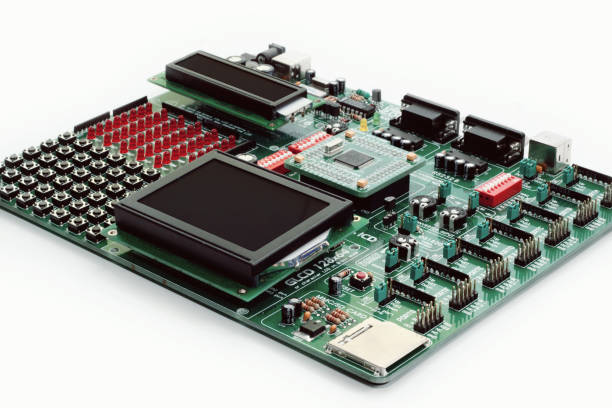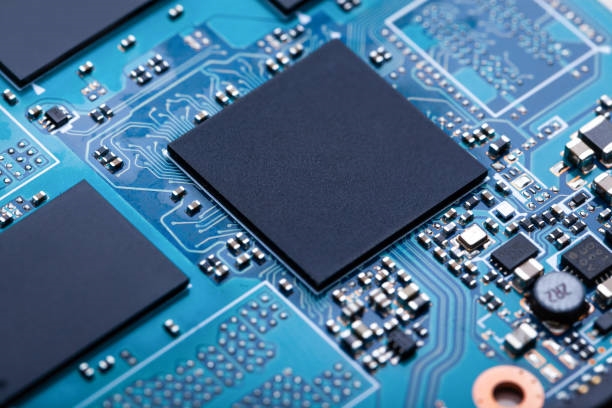Overview
A microcontroller minimal system, or minimal application system, is the smallest set of components that allows a microcontroller to operate. For the 8051 family, a minimal system typically includes the microcontroller itself, a crystal oscillator circuit, and a reset circuit.
Reset Circuit
Purpose: The reset circuit serves the same role as a computer reboot. If the system hangs or the program runs away due to interference, activating the reset causes the internal program to restart from the beginning. A typical reset circuit for a microcontroller is shown above.
Working principle: In textbooks, the 8051 reset requires the RST pin to see a high level for about 2 us to trigger a reset. In a system with an RC reset, the circuit provides that high level at power-up and again when a reset button is pressed, so a running system can be reset by operating the button.
Why power-on causes a reset: In the example circuit, the capacitor value is 10 uF and the resistor is 10 kΩ. The RC time constant is 10 kΩ * 10 uF = 0.1 s. The capacitor charges to roughly 0.7 Vcc (for a 5 V supply, 0.7*5 V = 3.5 V) in about 0.1 s. During that 0.1 s the capacitor voltage rises from 0 to about 3.5 V, so the resistor sees the complementary voltage change from about 5 V down to about 1.5 V (the sum of voltages in a series circuit equals the supply). During this interval the RST pin receives a high-level signal for roughly 0.1 s, so the microcontroller performs an automatic reset at power-up.
Why pressing the button causes a reset: After the initial 0.1 s, the capacitor is charged near 5 V and the resistor node is near 0 V, so RST is low and the system runs normally. When the reset button is pressed, it provides a discharge path for the capacitor, so the capacitor voltage falls from about 5 V toward 1.5 V within the same RC time frame. This changes the resistor node voltage, driving the RST pin high and causing the microcontroller to reset.
Crystal Oscillator
A crystal is effectively an electrical two-terminal network that can be modeled by a series branch (a resistance and a reactance) in parallel with a capacitance. This network exhibits two resonant points: a lower-frequency series resonance and a higher-frequency parallel resonance. Because the two resonances are very close in frequency, the crystal behaves like an inductor within a very narrow frequency range. By placing appropriate capacitors across the crystal, a parallel-resonant circuit is formed; when this network is used around an inverting amplifier with feedback, it produces a stable sine-wave oscillator. Because the crystal's equivalent inductance region is narrow, the oscillator frequency remains stable even if other component parameters vary significantly.
Load capacitance is an important specification for a crystal. Choosing external capacitors that match the crystal's specified load capacitance yields the nominal resonance frequency. Typical oscillator arrangements place the crystal between the amplifier's input and output, with two capacitors from each crystal pin to ground. The series combination of those two capacitors should equal the crystal's required load capacitance. Note that the IC pins themselves have input capacitance that must be accounted for.
Common crystals specify load capacitances of 12.5 pF or 15 pF. Considering the IC pin input capacitance, two 22 pF capacitors to ground are often a practical choice. Manufacturers such as Atmel recommend placing two ceramic capacitors from the crystal pins to ground, typically in the 10 pF to 50 pF range, to suppress spurious modes and improve oscillator stability.
The crystal provides the clock pulses that determine the microcontroller's operating rate. For example, a 12 MHz crystal yields a 12 MHz clock. Each microcontroller has an acceptable operating frequency range; exceeding the recommended maximum (for many 8051 variants around 24 MHz) can lead to instability.
Port 0 Pull-up Resistors
Port 0 on many 8051 microcontrollers is an open-drain port. When outputting a low level it can drive 0 V, but it cannot source a true high level to provide current to a load. Therefore external pull-up resistors to VCC are required when Port 0 is used as a general-purpose I/O to supply current when the pin is high. Because Port 0 lacks internal pull-ups, an external pull-up network is usually necessary.
- When Port 0 is used for address/data multiplexing, external pull-ups are typically not connected.
- When used as a general-purpose I/O, external pull-up resistors must be provided because Port 0 has no internal pull-ups.
- If Port 0 drives a PNP transistor, external pull-ups are not required in that specific driving configuration where a low level is the active state.
- If Port 0 drives an NPN transistor, external pull-ups are required because the driven stage needs a high level at Port 0 to turn it on.
EA/Vpp (Pin 31)
For STC89C51/52 and other 8051-compatible microcontrollers, the EA/Vpp pin determines whether code execution starts from internal or external memory after reset. If EA is held high, the microcontroller executes from internal ROM starting at 0000H after reset. If EA is held low, execution begins at address 0000H in external ROM. This distinction is important during system design and is often overlooked by beginners.
 ALLPCB
ALLPCB








